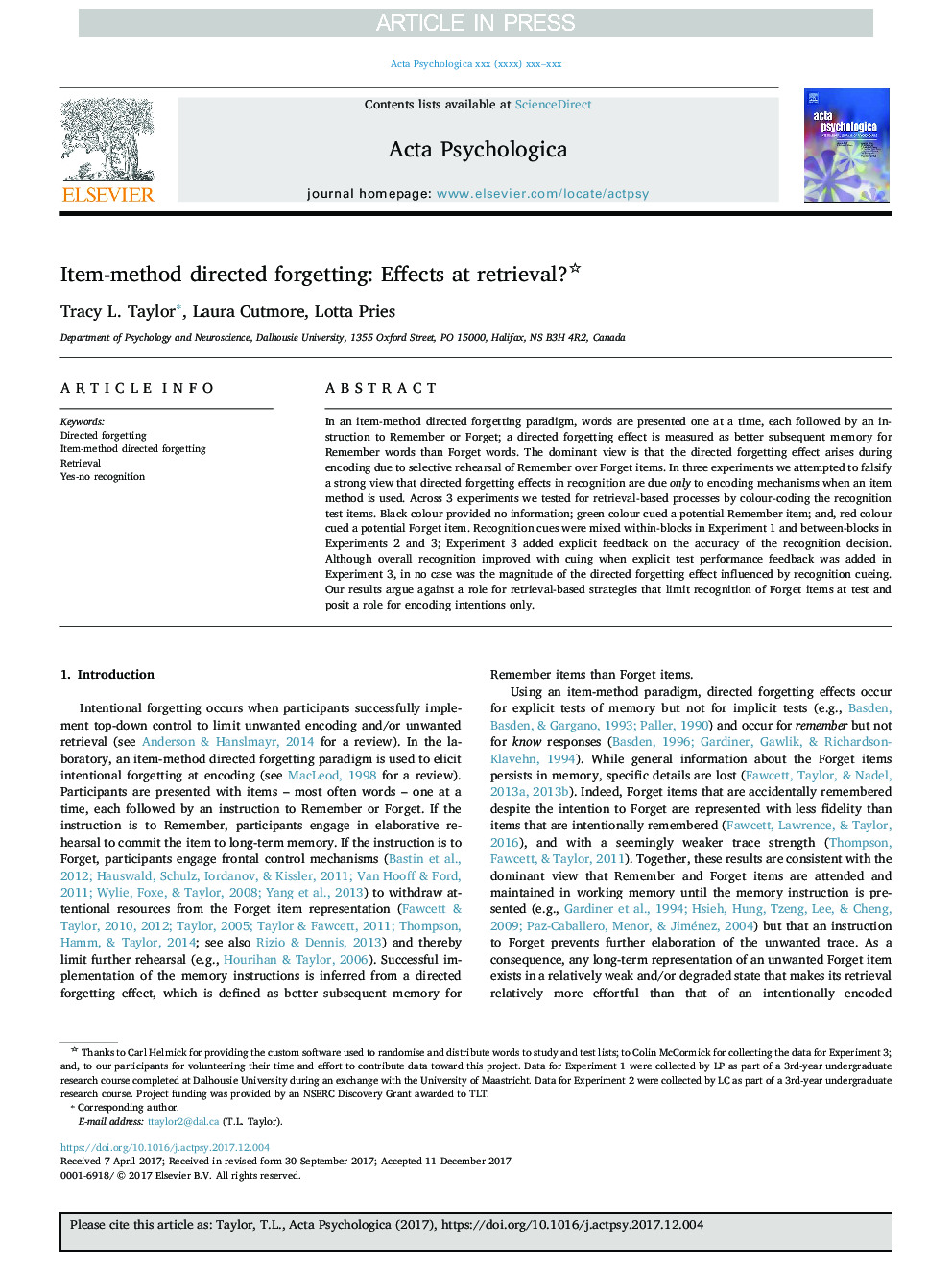| Article ID | Journal | Published Year | Pages | File Type |
|---|---|---|---|---|
| 7276876 | Acta Psychologica | 2018 | 8 Pages |
Abstract
In an item-method directed forgetting paradigm, words are presented one at a time, each followed by an instruction to Remember or Forget; a directed forgetting effect is measured as better subsequent memory for Remember words than Forget words. The dominant view is that the directed forgetting effect arises during encoding due to selective rehearsal of Remember over Forget items. In three experiments we attempted to falsify a strong view that directed forgetting effects in recognition are due only to encoding mechanisms when an item method is used. Across 3 experiments we tested for retrieval-based processes by colour-coding the recognition test items. Black colour provided no information; green colour cued a potential Remember item; and, red colour cued a potential Forget item. Recognition cues were mixed within-blocks in Experiment 1 and between-blocks in Experiments 2 and 3; Experiment 3 added explicit feedback on the accuracy of the recognition decision. Although overall recognition improved with cuing when explicit test performance feedback was added in Experiment 3, in no case was the magnitude of the directed forgetting effect influenced by recognition cueing. Our results argue against a role for retrieval-based strategies that limit recognition of Forget items at test and posit a role for encoding intentions only.
Keywords
Related Topics
Life Sciences
Neuroscience
Cognitive Neuroscience
Authors
Tracy L. Taylor, Laura Cutmore, Lotta Pries,
